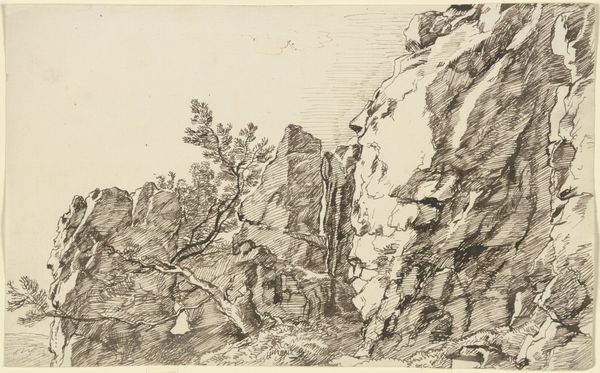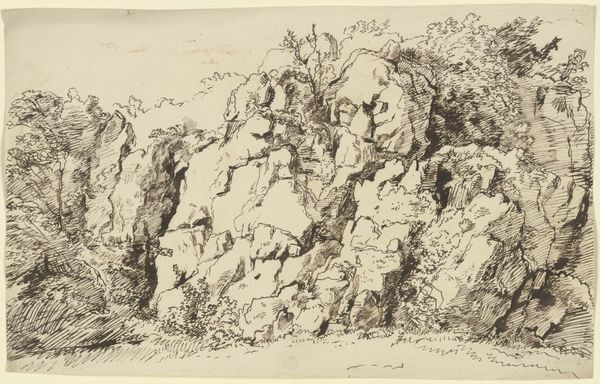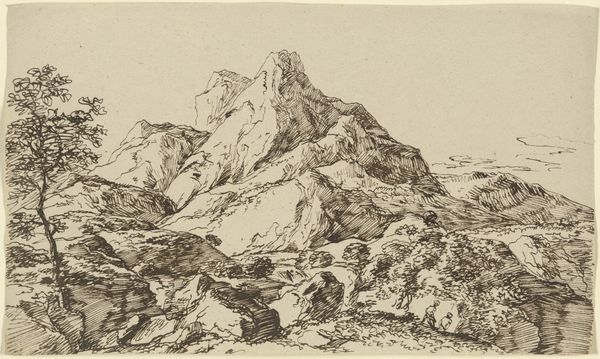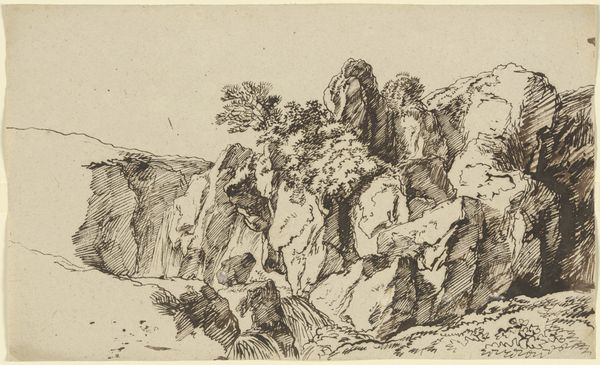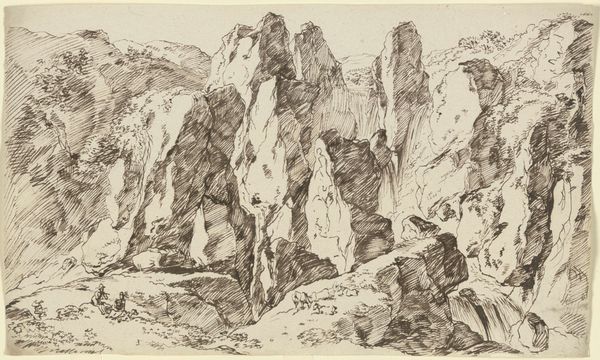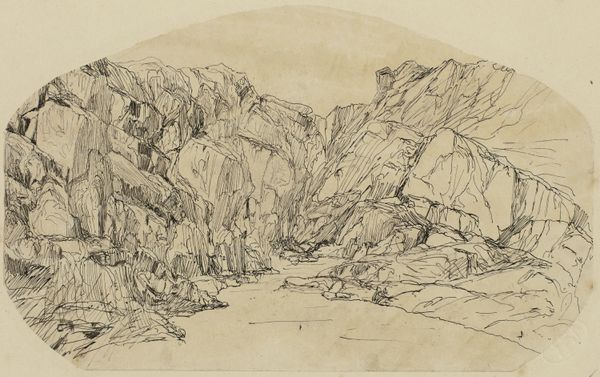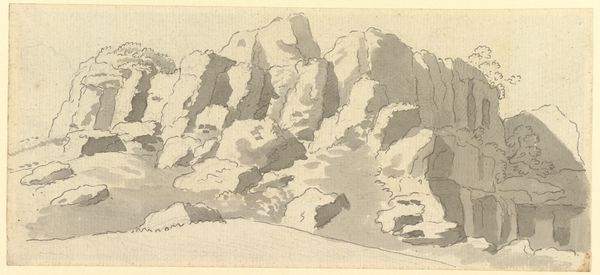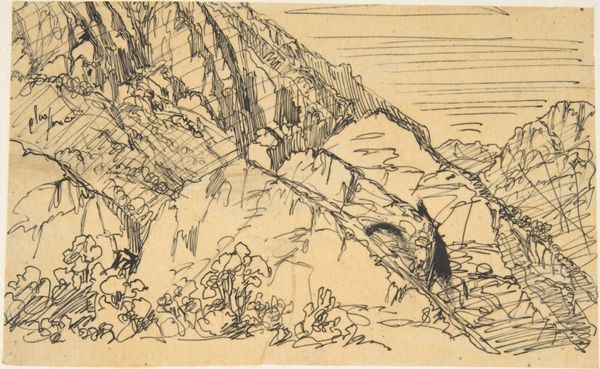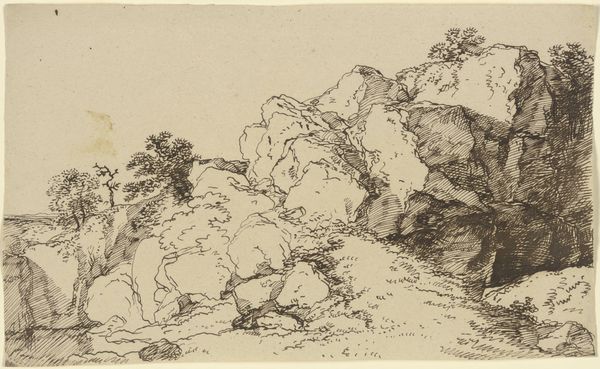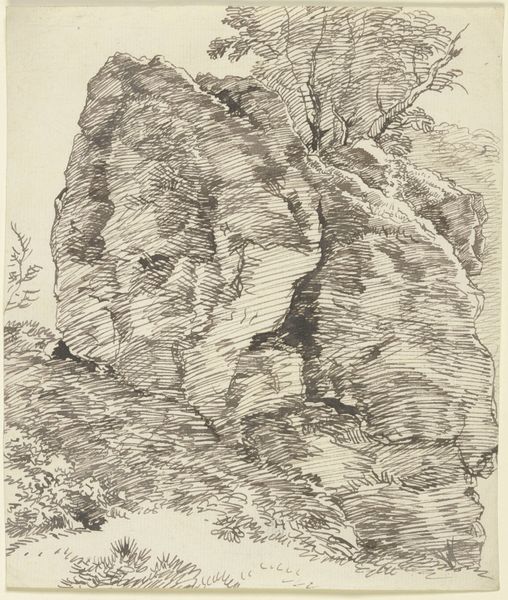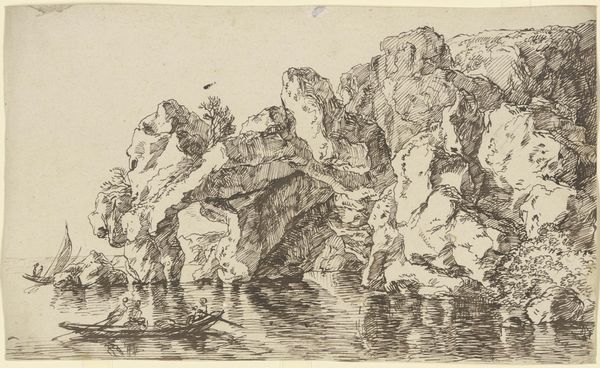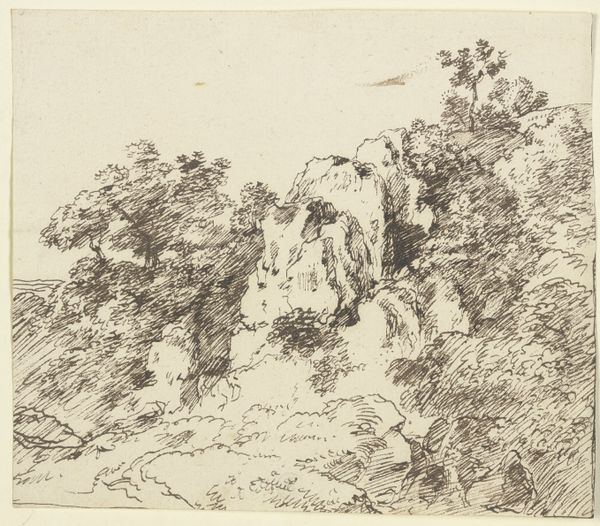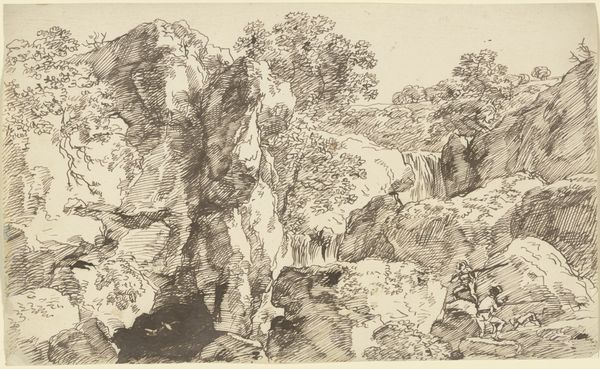
Zerklüftete Felswand, vorne rechts eine am Hang sitzende Gewandfigur
0:00
0:00
drawing, ink
#
drawing
#
landscape
#
ink
#
german
#
15_18th-century
#
line
Copyright: Public Domain
Curator: Looking at this, I immediately feel a sense of dramatic solitude. It’s almost oppressive, these monumental rocks looming above what seems like a tiny figure. What do you see? Editor: This ink drawing is called "Zerklüftete Felswand, vorne rechts eine am Hang sitzende Gewandfigur," or "Cleft Rock Wall, figure in robes sitting on a slope to the right". We have it here at the Städel Museum, and the artwork has been attributed to Franz Kobell, a German artist from the 18th century known for his landscape drawings. Curator: Robes! That explains the presence... I felt a story there, and it needed something…human. I like the way the light seems to carve out the shapes. Do you think this says anything about Enlightenment views on humanity and nature? Editor: Absolutely. Kobell's landscapes often incorporate these kinds of figures to invite reflection on man’s relationship with his surroundings. In the late 18th century, particularly among the German *Sturm und Drang* movement, you find a lot of exploration into how sublime and overwhelming landscapes mirror human emotional states, and these rocky outcrops provide excellent symbolism of inner struggles and the grand scale of life itself. Curator: It's interesting how he's used simple lines to give the rocks such weight. I almost hear them creaking under their own mass! What I find poignant is how insignificant the figure appears against that scale, as though lost or in awe. Editor: It makes me think about how rapidly industrialization changed people's views on landscape as well, which could explain a focus on a lone, almost melancholy figure, overpowered by rock and nature, perhaps fearful or resistant to change. Even simple sketches like these spoke to anxieties present at the time, as cultural ideals began to shift from agrarian to industrial priorities. Curator: That rings true. There’s something timeless and still resonant in capturing this feeling, this tension between ourselves and the planet. Perhaps this feeling isn't all that different today from what Kobell wanted us to consider in the past. Editor: Exactly, art provides a critical lens through which to interpret societal change. This small but powerful drawing holds such an example within its stark contrasts of line and form.
Comments
No comments
Be the first to comment and join the conversation on the ultimate creative platform.
